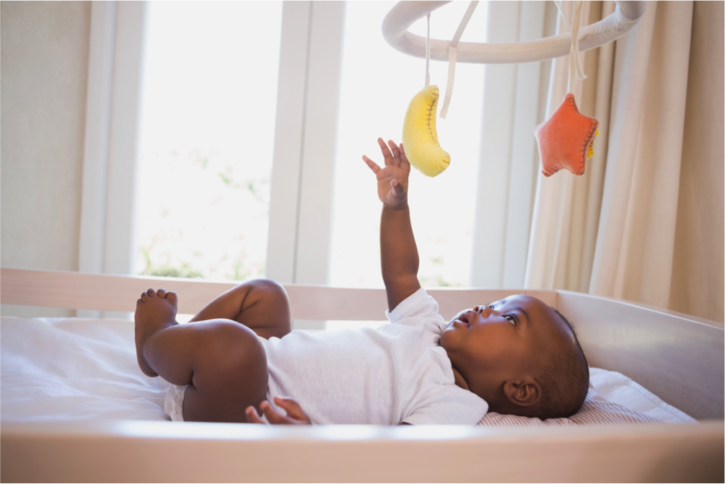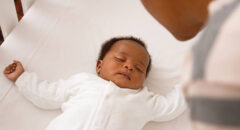 Safe sleeping habits for babies continues to be a significant issue in the United States (U.S.). In 2015 about 3,700 babies died because of sudden unexpected infant deaths (SUID). SUIDs occur when a child dies suddenly in the first year of life and no cause is identified or it is related to suffocation and strangulation in bed. Deaths due to suffocation or strangulation likely occur as a result of bed sharing.
Safe sleeping habits for babies continues to be a significant issue in the United States (U.S.). In 2015 about 3,700 babies died because of sudden unexpected infant deaths (SUID). SUIDs occur when a child dies suddenly in the first year of life and no cause is identified or it is related to suffocation and strangulation in bed. Deaths due to suffocation or strangulation likely occur as a result of bed sharing.
There has been much debate about bed sharing and some parents continue this practice despite recommendations against it. Black infants have the second highest SUID rate and the highest infant mortality rate in the U.S. The most recent data shows that 11 black infants die per 1,000 live births in the first year of life.
The overall U.S. infant mortality rate is 5.8 per 1,000 live births, which is one of the highest rates compared to other industrialized countries. However a tradition in Finland since the 1930s might be the answer to this problem. Have you heard about cardboard baby boxes? These boxes just might be the new baby bassinets.
Cardboard baby boxes are a fairly new idea in the United States but are regular practice in Finland. The maternity package program was started in Finland in 1938 to address the high infant mortality rate. The maternity package included a neatly designed box with a slim, firm mattress on the inside, which served as a baby bed. It came packed with baby items including blankets, clothes and reusable diapers.
The packages were initially given only to disadvantaged mothers to encourage safe and healthy habits for new parents. Since starting this program, the infant mortality rate in Finland decreased from 65 deaths per 1,000 live births to 2.5 deaths per l,000 live births. This has led many U. S. hospitals to consider adopting the practice by launching statewide programs. However as states are gearing up to start free baby box programs, concerns are being raised.
Dr. Moon, chair of the American Academy of Pediatrics (AAP) taskforce for sudden infant death syndrome, points out that expert unbiased opinions on safety of the boxes are needed. The Consumer Product Safety Commission reports, baby boxes are not defined as a crib, bassinet or handheld carrier and therefore are not subject to safety regulations. The U.S. based Baby Box Company reports that development of mandatory safety regulations for the boxes is underway.
So far, there are no known complications related to using the boxes. The AAP’s official position is that there is not enough data to determine if using baby boxes will impact the infant mortality rate. Research experts in Finland highlight that many factors contribute to the decrease in mortality rate including increased health care visits. Mothers were not eligible to receive the maternity package unless they had a maternity visit before the 5th month of pregnancy.
Adoption of baby boxes is an attractive new idea that may help improve sleep safety habits in the U.S. However further investigation and guidelines are needed before universally recommending its use. More emphasis on improving family education, resources and access to healthcare will be required to decrease the number of babies who don’t make it to their first birthday.
 Dr. Launice is a Board certified Pediatrician trained in the specialty of Neonatology whose passion is caring for sick babies and helping Moms transition to life in the NICU with a preemie. She is an author, speaker and social media expert. Learn more about Dr. Launice at www.drlaunicemd.com and by following her on Facebook, Instagram, Twitter and Youtube @DrLauniceMD
Dr. Launice is a Board certified Pediatrician trained in the specialty of Neonatology whose passion is caring for sick babies and helping Moms transition to life in the NICU with a preemie. She is an author, speaker and social media expert. Learn more about Dr. Launice at www.drlaunicemd.com and by following her on Facebook, Instagram, Twitter and Youtube @DrLauniceMD








